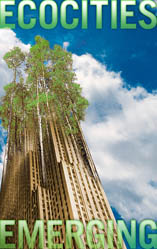
Posted: August 15th, 2008
Bob Driehaus
The New York Times Media Group
OHIO – From his months-old French bistro, Jean-Robert de Cavel sees
restored Italianate row houses against a backdrop of rundown tenements
in this city’s long-struggling Over-the-Rhine neighborhood.
He also sees a turnaround for the district, thanks to plans to revive
a transit system that was dismantled in the 1950s: the humble
streetcar line.
”Human beings can be silly because we move away from things too
quickly in this country,” de Cavel said. A ”streetcar is definitely
going to create a reason for young people to come downtown.”
Cincinnati officials are assembling financing for a $132 million
system that would connect the city’s riverfront stadiums, downtown
business district and Uptown neighborhoods, which include six
hospitals and the University of Cincinnati, in a loop of six to eight
miles, or 10 to 13 kilometers. Depending on the final financing
package, fares may be free, 50 cents or $1.
The city plans to pay for the system with existing tax revenue and $30
million in private investment. The plan requires the approval of Mayor
Mark Mallory, a proponent, and the City Council.
At least 40 other U.S. cities are exploring streetcar plans to spur
economic development, ease traffic congestion and draw young
professionals and empty-nest baby boomers back from the suburbs,
according to the Community Streetcar Coalition, which includes city
officials, transit authorities and engineers who advocate streetcar
construction.
More than a dozen have existing lines, including New Orleans, which is
restoring a system devastated by Hurricane Katrina. Denver, Houston,
Salt Lake City and Charlotte, North Carolina, have introduced
streetcars this decade.
”They serve to coalesce a neighborhood,” said Jim Graebner, chairman
of the American Public Transportation Association’s streetcar and
vintage trolley committee. ”That’s very evident in places like San
Francisco, which never got rid of its streetcar system.”
Modern streetcars, like those Cincinnati plans to use, cost about $3
million each, run on an overhead electrical wire and carry up to 130
passengers per car on rails that are flush with the pavement.
Having doors on both sides also enables streetcars to pick up
passengers on either side, making for shorter stops than buses.
Streetcar advocates point to Portland, Oregon, which in 2001 built the
first major modern streetcar system in the United States and has since
added new lines interlaced with a growing light rail system.
Since Portland announced plans for the system, more than 10,000
residential units have been built, and $3.5 billion has been invested
in property within two blocks of the line, according to Portland
Streetcar Inc., which operates the system.
Critics, including Randal O’Toole, a senior fellow at the Cato
Institute, a libertarian research organization in Washington, and a
specialist in urban growth and transportation issues, counter that
growth along streetcar lines is dependent on public subsidy and of
little use.
”It looks like it’s going to take you somewhere, but it’s only
designed to support downtown residents,” he said. ”If officials fall
for the hype and don’t ask the hard questions, voters should vote them
out.”
Cincinnati’s streetcar enthusiasts counter that they serve to shrink
residents’ everyday world of work, shopping and entertainment by
bringing services and businesses to one area.
”One happy consequence will be that streetcar customers who live in
the area will be less mobile by choice,” said John Schneider, a
Cincinnati real estate developer and downtown resident who championed
an unsuccessful 2002 county sales tax proposal that would have
financed a regional light rail system.
Since then, gas prices have risen sharply, and advocates have started
emphasizing streetcars’ ability to revitalize urban neighborhoods.
”In years gone by, people would move to cities to get a job,” said
the Cincinnati city manager, Milton Dohoney. ”Today, young, educated
workers move to cities with a sense of place. And if businesses see us
laying rail down on a street, they’ll know that’s a permanent route
that will have people passing by seven days a week.”
After looking into streetcar systems in Seattle; Tacoma, Washington;
and Charlotte, Dohoney became convinced that they spur growth.
”Cincinnati has to compete with other cities for investment,” he
said. ”We have to compete for talent and for place of national
prominence.”
A hundred miles northeast, Mayor Michael Coleman of Columbus, Ohio,
has come to the same conclusion and is pushing to build a $103 million
streetcar network along the city’s High Street connecting Ohio State
University with the downtown business district. The loop would be paid
for through a 4 percent surcharge on concert tickets, sporting events
and downtown parking and a $12.5 million contribution from Ohio State.
”It is directly tied to economic development, and when times are
tough in Ohio, we need an additional tool to create jobs,” Coleman
said.
While critics question whether scarce city money would be better spent
elsewhere, Coleman argues that streetcars are important to the city’s
growth.
”We have to plan for the future,” he said. ”I believe in 10 years,
we would ask, ‘Why didn’t we do this?’ It will be 10 times more
expensive, and the cost of gas will be unaffordable.”



 Posted by Sven
Posted by Sven 





